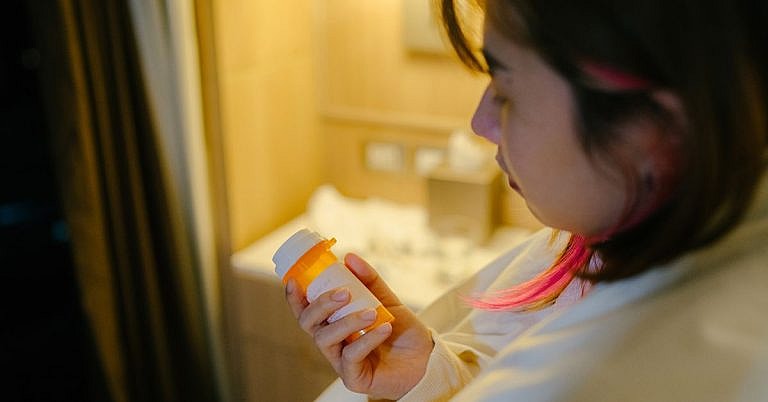Breast Problems Other Than Cancer: Cysts, Mastitis, and More
Noncancerous (benign) breast conditions are common. In fact, most changes that people notice in their breasts fall into this category.
It can sometimes be difficult to tell these issues apart from breast cancer. Also, some of them can increase the chance of breast cancer in the future, so accurately diagnosing and treating them are important.
Here are the signs and symptoms that may signify a noncancerous condition.
Fibroadenomas
More common among people in their 20s and 30s, fibroadenomas are benign breast tumors.
If very small, you may not be able to feel a lump. But if big enough, they can resemble a marble and be moved under the skin. They aren’t painful to the touch but may feel firm or rubbery.
Simple fibroadenomas, which look the same all over when examined under a microscope, don’t seem to have a significant effect on the future risk of breast cancer.
On the other hand, complex fibroadenomas — which have other atypical cell changes — can increase the risk of cancer slightly more than the simple type.
Fibrocystic changes
Lumps resulting from a collection of fibrous tissue are known as fibrocystic changes. These are relatively common.
In addition to a noticeable lump, which may feel firm or rubbery, you may experience swelling, tenderness, or pain in your breasts and potentially nipple discharge. Symptoms may worsen before your period.
Experts don’t believe that these changes increase the risk of breast cancer.
Cysts
Cysts are sacs filled with fluid. They can start unnoticeably small and grow as the fluid builds up. They’re quite common, they typically feel round or oval, and they can be moved inside the breast.
If you have a cyst, you may notice that it gets bigger and may feel painful before your period.
Cysts that are filled entirely with fluid aren’t linked to a higher risk of breast cancer. However, cysts that have cloudy fluid or irregular borders may need further examination to check for cancer.
Mastitis
Typically due to an infection, mastitis is when there’s swelling in the breast. It’s often associated with nursing, specifically when milk ducts clog or the skin of the nipple breaks.
Other causes include skin conditions or piercings on or around the nipple area, smoking, breast implants, and a weakened immune system.
As well as swelling, you may notice that the skin feels hot and painful to the touch. It may also look red or flushed.
Other symptoms include nipple discharge with streaks of blood, a hard area on the affected breast, and flu-like feelings, such as fatigue, aching, and a high temperature.
Mastitis doesn’t influence the later risk of breast cancer.
Papilloma
These benign wart-like tumors can grow inside milk ducts and lead to clear or blood-streaked nipple discharge. The lump is typically small and sits behind or next to the nipple.
If the growth is farther away from the nipple, you’re less likely to see discharge. And there are more likely to be several growths close together.
One papilloma that has no irregular features isn’t a concern. However, multiple papillomas can slightly raise the risk of breast cancer.
Duct ectasia
If a milk duct widens and the walls become thicker, the duct can block, and fluid can build up inside it. This is known as duct ectasia. It’s more common in people nearing menopause.
There are often no visible symptoms with this condition. In some cases, the nipple may discharge a sticky and thick fluid, or the nipple and nearby areas may look red or flushed and feel tender.
A hard lump can form due to scar tissue inside the breast, which some people may confuse with breast cancer. Duct ectasia doesn’t make it more likely that you’ll get breast cancer, though.
Adenosis
Adenosis is when glands that produce milk, known as lobules, get bigger.
If scar tissue affects the lobules, you may notice pain and a lump in your breast, and you may have a slightly higher chance of breast cancer in the future. But there’s no evidence of adenosis with no scar tissue affecting future breast cancer risk.
Fat necrosis and oil cysts
If fatty breast tissue becomes damaged, either naturally or through surgery or radiation treatment, fat necrosis can occur.
Fat cells can die, forming oil cysts filled with a greasy fluid. With time, calcium deposits can begin to form around the walls of these cysts.
You’ll generally be able to feel a lump with this condition, and you may notice that the skin around it is inflamed, bruised, or thicker. But there shouldn’t be any pain, and you won’t have a higher chance of breast cancer because of it.
Radial scars
Although they’re not actually scars, radial scars look like them under a microscope. Instead, they’re areas of hardened tissue. They often occur in both breasts.
Typically, you won’t notice any symptoms if you have a radial scar. Often, healthcare professionals can only detect them during a biopsy or a mammogram, and they can look similar to breast cancer. They can also slightly raise the risk of breast cancer.
Hyperplasia
When cells that line milk-producing glands or ducts increase in production, an overgrowth of such cells can occur. This is known as hyperplasia.
There are two types of hyperplasia:
- Usual hyperplasia means that the cells look fairly typical. The risk of breast cancer with this type is around one to two times higher than in people without hyperplasia.
- Atypical hyperplasia means that the cells appear atypical. There’s around a four to five times higher chance of breast cancer with this type.
Often, the only way to know if you have hyperplasia is through a mammogram followed by a biopsy.
Lobular carcinoma in situ
With lobular carcinoma in situ (LCIS), atypical cells begin to grow in the lining of the milk-producing glands. They remain there and don’t spread anywhere else, unlike cancer.
There are three types of LCIS:
Pleomorphic and florid LCIS can cause a lump that you can feel. But most of the time, healthcare professionals only find LCIS through a breast biopsy that they’ve done for another reason.
Although LCIS isn’t cancerous, it can mean that you’re more likely to get breast cancer later on. The risk is seven to 12 times higher.
Frequently Asked Questions
What are Breast Cysts?
Breast cysts are fluid-filled sacs within the breast, common among women aged 35 to 50. They are usually not cancerous and may feel like a soft grape or firm lump.
What Causes Breast Cysts?
Breast cysts may develop naturally as breast tissue changes during a woman’s menstrual cycle due to hormonal fluctuations. They are part of the normal aging process of the breast.
What is Mastitis?
Mastitis is an inflammation of the breast tissue, often caused by an infection. It can result in swelling, redness, and pain, and is most common in breastfeeding women.
What Are the Symptoms of Mastitis?
Symptoms of mastitis include breast pain, swelling, warmth, redness, and sometimes fever. It can make you feel generally unwell, similar to flu symptoms.
Can Mastitis Affect Non-Breastfeeding Women?
Yes, although mastitis is more common in breastfeeding women, it can also affect women who are not breastfeeding due to bacterial infections.
How Are Breast Cysts Treated?
Breast cysts often do not need treatment unless they are large or painful. In these cases, they may be drained using a needle. Regular monitoring by a healthcare provider is recommended.
How is Mastitis Treated?
Mastitis is typically treated with antibiotics to clear the infection. Warm compresses and consistent breastfeeding or milk expression may also help alleviate symptoms.
Can Breast Cysts Turn into Cancer?
Breast cysts themselves do not turn into cancer. However, it is essential to monitor any breast changes and consult a healthcare provider for proper evaluation.
The bottom line
Lots of noncancerous changes can occur in the breast, with some more common than others.
Not all of them result in noticeable lumps. Other signs and symptoms include tenderness, skin changes, and nipple discharge.
If you’re ever concerned about changes to your breasts, it’s best to book a doctor’s appointment as soon as possible.
Lauren Sharkey is a U.K.-based journalist and author specializing in women’s issues. When she isn’t trying to discover a way to banish migraine, she can be found uncovering the answers to your lurking health questions. She has also written a book profiling young female activists across the globe and is currently building a community of such resisters. Catch her on X.




Thank you for this informative post! It’s so important to be aware of breast issues beyond cancer. Understanding conditions like cysts and mastitis can help people identify symptoms early and seek appropriate care. This information empowers individuals to maintain their breast health and not jump to conclusions. Kudos for spreading awareness about these common yet often overlooked issues!
This is a very informative post! It’s crucial to raise awareness about breast conditions beyond cancer, as they can often cause anxiety and concern. Thank you for shedding light on cysts, mastitis, and other issues—understanding these can help many people know when to seek medical advice and not panic unnecessarily.
This is a really informative post! It’s important for people to understand that not all breast issues are related to cancer, and there are many other conditions like cysts and mastitis that can affect breast health. Thank you for shedding light on these common problems and highlighting symptoms to watch out for. It’s a great reminder to stay proactive about breast health and to consult healthcare providers if we notice any changes.
This article is incredibly informative! Many people only associate breast health issues with cancer and may overlook other common conditions. Understanding more about cysts, mastitis, and other non-cancerous problems empowers individuals to seek appropriate treatment and not panic unnecessarily. Thank you for shedding light on these important topics!
This article is incredibly informative! It’s so important to raise awareness about the various breast issues that aren’t related to cancer. Understanding conditions like cysts and mastitis can help alleviate a lot of anxiety and encourage proactive healthcare. Thank you for shedding light on these topics!
Thank you for sharing this insightful post! It’s important to raise awareness about breast health issues beyond cancer, as many people may not know about conditions like cysts and mastitis. Your detailed information helps in understanding these problems and underscores the importance of regular check-ups and consultations with healthcare professionals. Keep up the great work in educating people on such crucial topics!
This article is incredibly informative! It’s so important to raise awareness about breast health issues beyond cancer, as they are quite common and can cause significant discomfort or concern. Understanding conditions like cysts and mastitis can help individuals manage symptoms better and seek appropriate treatment. Thanks for shedding light on these vital topics!
This is a very informative post! Breast health is so important, and it’s reassuring to know about the various non-cancerous issues that can occur. Thank you for shedding light on these conditions and providing clarity on symptoms and treatments. It’s crucial to address these concerns and not immediately jump to worst-case scenarios. Great resource for anyone looking to understand more about breast health!
This is such an informative read! It’s important to be aware of these other breast conditions that are not cancer-related but can still significantly impact health. Thank you for shedding light on these issues, providing details, and encouraging readers to consult healthcare professionals when they notice unusual changes. It’s crucial to have a broader understanding of breast health beyond just cancer. Great job on raising awareness!
This is a really informative post! It’s important to highlight that not all breast problems are related to cancer, as it can ease a lot of anxiety for many. Understanding conditions like cysts and mastitis helps in recognizing early symptoms and seeking appropriate treatment. Thanks for shedding light on these issues and encouraging proactive health management!